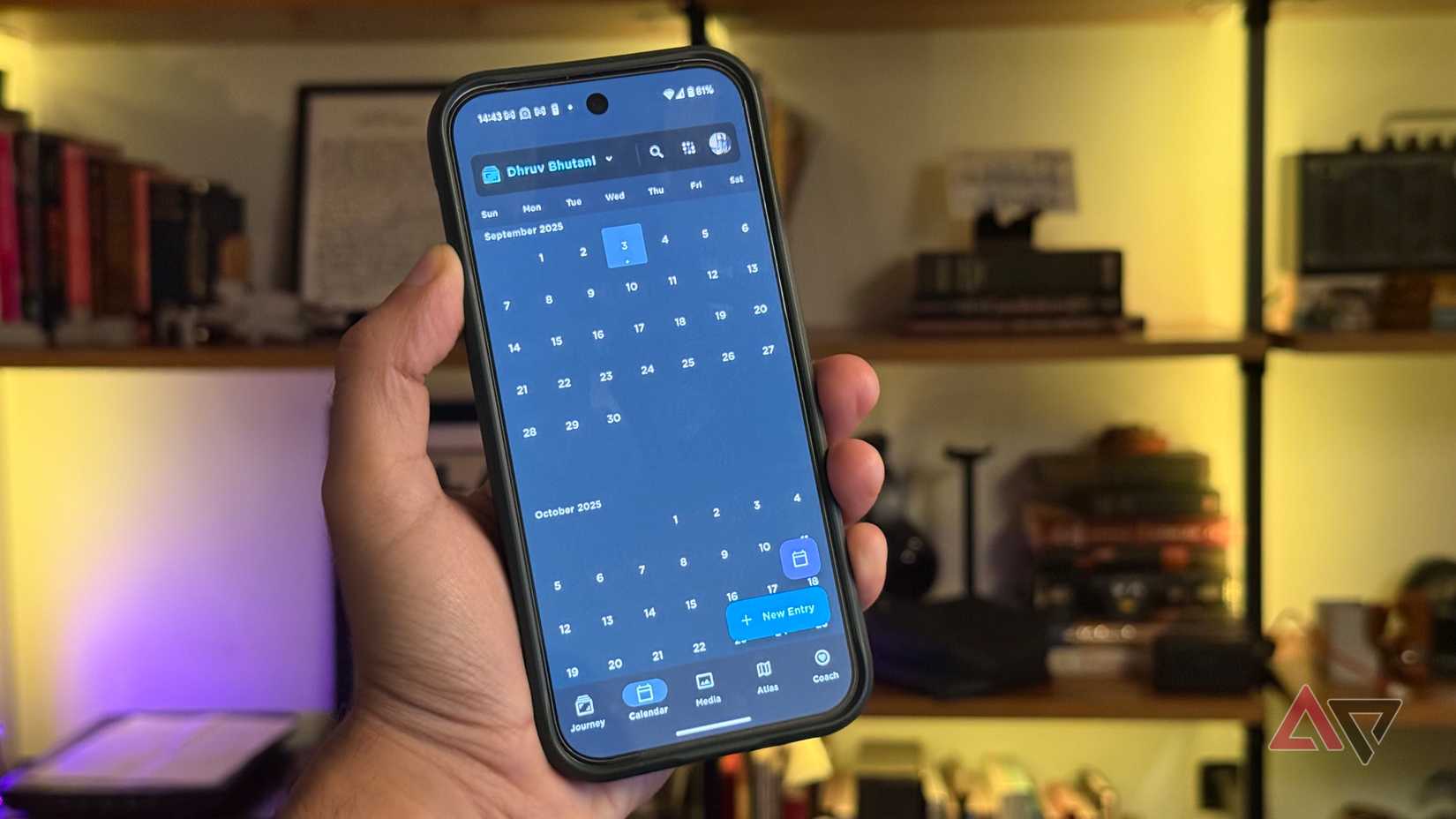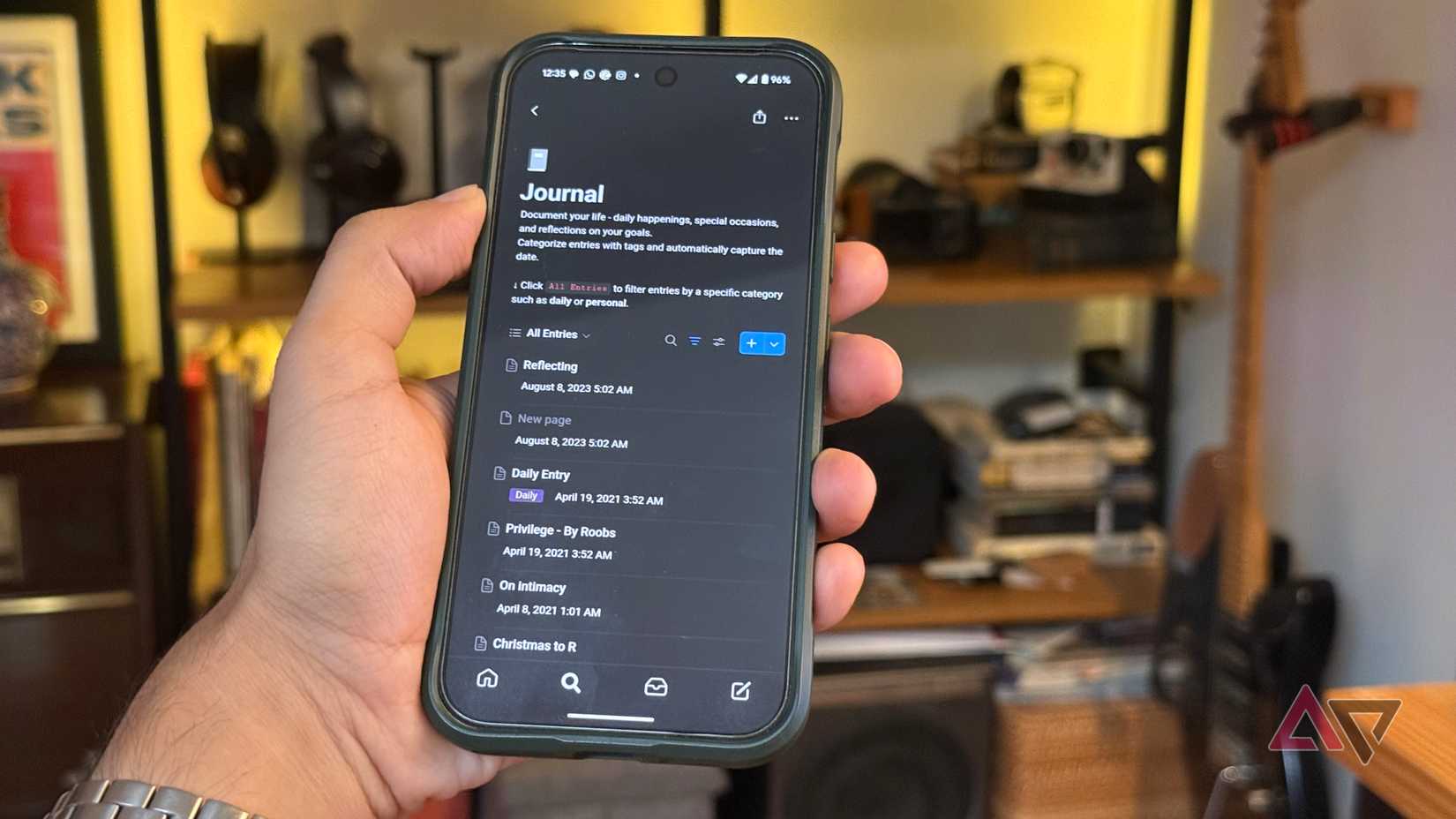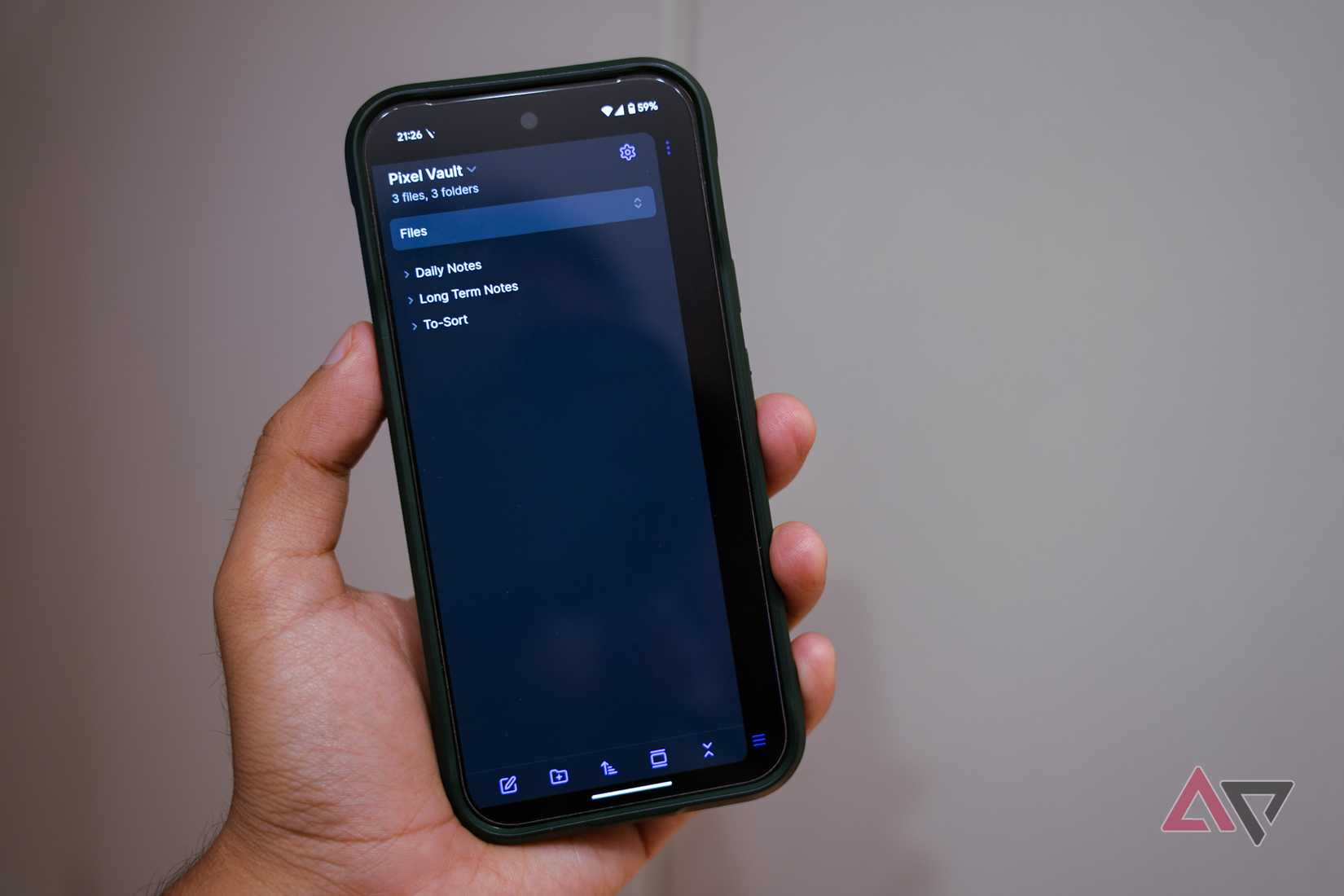Google’s all-new Pixel Journal is getting on the growing digital journaling trend while also setting its sights on Apple’s Journal app.
It gets all the basics right and includes all the essentials like the ability to jot down your thoughts, photos, health milestones, locations, and more.
Google has given it a further nudge by integrating on-device AI that gives you contextual nudges and sentiment analysis.
The only problem? The app is exclusive to the latest Pixel phones right now. Not only are non-Pixel 10-series users left in the lurch, but if you move out of the ecosystem, your journal entries get left behind. That’s a no-go.
But fret not. The Pixel Journal app isn’t the only journaling app in town. The Play Store is full of excellent options, many of which we’ve highlighted below.
6
Journey
A versatile journaling app with easy export options
I’ve been a Journey user for almost a decade now, for a good reason. This full-featured journaling app feels like a polished physical journal.
There are ample options here to tweak your experience. From rich formatting to attaching media, tagging, and scheduled reminders to ensure that you don’t forget to journal. All the essentials are covered.
Journey includes apps for all major platforms, including iOS, Android, and the web, so you can continue your journaling experience without platform restrictions.
Additionally, all journal entries synchronize over Google Drive or Journey’s cloud platform, giving you options.
Finally, my favorite part is Journey’s ability to export all your entries to PDF or Word if you ever need to print them out.
5
Day One
Privacy and longevity are the key
Day One is widely considered the gold standard of journaling apps for good reason. The app has a strong focus on privacy. It makes sense, too.
A journaling app, by definition, contains your most private thoughts, and an app that reinforces strong encryption gets a leg up. Day One includes tablestakes features like the ability to lock your journal with a fingerprint and pin.
The journaling experience is top-notch, too, with support for Markdown formatting making it easy to move your notes between services.
You can also capture metadata like the weather, time, and location where you’re taking notes.
The app works across mobile and desktop platforms, so your journal is always accessible, but you’ll need to get a subscription to maximize the capabilities of the app.
That said, the app has been around for many years, ensuring that if you care about your memories, Day One is a reliable spot to store them.
4
Daylio
Tap-and-go journaling and mood tracking
Unlike other apps on this list, Daylio takes a bullet journal-style approach to journaling. This might just be the quickest way to maintain a journal.
The app doesn’t force you to write down your day. Instead, you can log your mood and activities in seconds using preconfigured options. Just tap and save.
Over time, Daylio builds a graph of how you’ve been feeling, and you can spot trends between what you’ve been doing and your emotions.
There’s ample customization, too, to make the app truly your own. Everything from colors to icons can be customized, and you can lock down the app with a pin.
Daylio’s tap-and-go approach makes it the perfect choice for people on the go.
3
Diarium
Power integrations and an affordable one-time fee
Just like Journey and Day One, Diarium takes a more traditional approach to journaling.
The app is designed to feel like a personal diary. Unfortunately, the interface can feel a bit dated. But don’t let that disuade you.
The cross-platform tool includes all the essentials like daily logging, location logging, adding photos, weather data, voice notes, and much more. Like the best journaling apps, Diarium presents you with a timeline of all your entries.
Moreover, it offers a lot of flexibility in how you want to synchronize your files: OneDrive, Google Drive, Dropbox, or your own server. The app gives you the choice to roll out your own storage solution.
Additionally, Diarium offers deep integrations with third-party services. For example, you can connect the app with Strava or Google Fit to automatically import major fitness milestones.
Privacy is also paramount, and like other journaling apps, Diarium lets you lock down your app with a password and fingerprint-based locks, ensuring that your writing stays private and under your control.
Unfortunately, many of the premium features are tied to a premium tier. However, unlike many of the other apps on this list, Diarium offers a reasonably priced one-time purchase instead of a subscription that offsets the cost.
2
Notion
An all-purpose workspace that doubles as a journal
Notion isn’t a journaling app per se, but it is the kind of app that can be repurposed into anything and everything to suit your needs. That makes it exceptionally powerful.
You can grab a template for daily journaling, logs, bullet journaling, gratitude journal, or any other form of writing directly from Notion. If you can think of it, it’s highly likely there’s a template for it.
While most templates come preconfigured with the essentials, Notion gives you the flexibility to add any other field you want to it.
Moreover, you can create dashboards that can pull data from multiple journal entries with monthly or weekly views.
Notion’s flexibility means that you’re not bound to any standard schema and can customize the interface entirely to your needs.
Additionally, the app is free unless you want AI features or high-end collaboration, making it a decent choice unless you want an interface that is specifically geared for journaling.
1
Obsidian
Interconnected notes with full data ownership
Like Notion, Obsidian isn’t specifically designed for journaling. But that doesn’t mean that it is bad at the job.
Obsidian might be the most flexible and customizable journaling app on this list. That’s because the app doesn’t constrain you to a specific stylistic choice or template.
Obsidian is completely open-ended in its approach and stands out from other journaling apps with its ability to interlink notes together. This means you can connect entries through backlinks, see them in a graph map to assess how they relate to each other.
You’ll also find a wide range of plugins for everything from calendars to notes, and more.
Obsidian lets your personal journal become a broad network of thoughts, ideas, and reflections, and take a step beyond timeline-based journaling.
Moreover, all your data is stored on-device with optional cloud-based synchronization, making Obsidian the obvious choice for users who value data ownership.
Finding the right journaling app for your needs
Journaling is all about building a habit, and finding an app that you’ll want to stick to is key to that.
While the Pixel Journal is excellent as a built-in tool, it is neither as full-fledged as some of the journal app alternatives we’ve talked about, nor is it as widely available.
Luckily, the Play Store is chock-full of excellent options that balance a low barrier of entry with a capable feature set, privacy, and polish.
Some like Daylio prioritize quick journaling, while Journey and Diarium give you cross-platform access and flexibility.
Others, like Notion and Obsidian, let you bend the tool to whatever shape you want while also giving you ownership over the data.
Simply put, the Pixel Journal app is great, but there are more than a few options available that’ll fill the gap for you on your Android phone.




